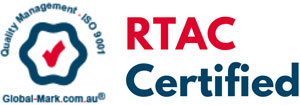When the sperm meets the egg, the first thing that happen is the egg is activated and responds by releasing calcium from internal storage. In some cases, activation of the egg does not occur.
Artificial Oocyte Activation can help activate the egg by using a calcium ionophore which causes an increase in calcium in the egg, improving the chance of fertilisation.
When is Artificial Oocyte Activation (AOA) used?
AOA can be used in a subsequent cycle after a cycle of ICSI results in no or very low fertilisation (less than 30%) and there is no obvious egg factor that can be corrected.
AOA cannot be used for the eggs after they fail to fertilise. No fertilisation after ICSI is rare – fewer than 2% of ICSI cycles. Often no or low fertilisation is due to an egg factor which may not be seen in another ICSI cycle.
What is the process?
1. Doctor consultation:
- Following an ICSI cycle with no or low fertilisation, your doctor will decide if AOA is a suitable option for a subsequent cycle.
- If AOA is elected, the doctor will select this in your plan in the medical record and a fee for AOA will be included in your bill.
2. ICSI will be performed as usual, then the eggs will be cultured for 15 minutes in culture medium containing calcium ionophore.
3. Following AOA, the eggs are rinsed to remove the calcium ionophore and placed into fresh culture media drops for routine culture.
4. Fertilisation is assessed 16-18 hours after ICSI.
Ask your doctor
If you have experienced an ICSI cycle with no or low fertilisation, your doctor will decide if AOA is a suitable option for a subsequent cycle. Please don't hesitate to ask your medical team about AOA.

